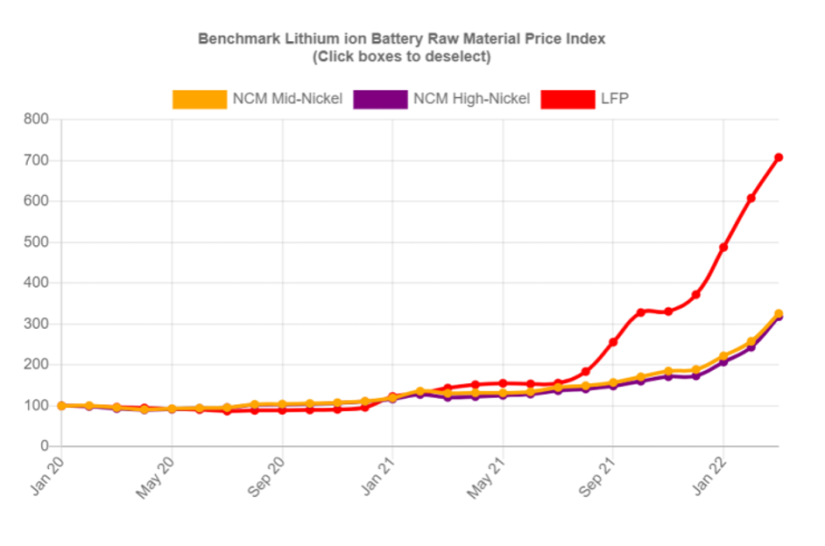Cheaper battery brighter future
Conventional lithium–ion batteries are not economically viable to meet the ever–increasing demands of large–scale stationary energy storage due to the high cost of raw materials. Researchers at UTS are working on novel low-cost battery technologies to help decrease the cost of energy storage.

‘The raising price of the raw materials of lithium–ion battery gives opportunities to the challengers’ – Professor Guoxiu Wang. Figure from Benchmark Mineral Intelligence.
Researchers in the Centre for Clean Energy Technology (CCET) at the University of Technology Sydney (UTS) have designed a new low-cost anion shuttle battery as a promising candidate to replace the conventional lithium–ion battery.
Halide–ion batteries (HIBs) with anion species as charge carriers are competitive for low–cost energy storage due to their relatively high energy density (>500 Wh L–1) and the natural abundance of halogen elements.

Comparison of the theoretical energy density and specific energy of Li–, Na–, K–, F–, and Cl–ion batteries. Figurefrom Nature Communications.
The cost of the cathode raw materials and electrolyte salt in the Cl-ion batteries (CIBs) are lower than those in Li–ion batteries.

Price of raw materials for Li– and Cl–ion batteries. Figure from Nature Communications.
However, the current state–of–the–art HIBs generally suffer from poor compatibility between electrodes and the halide–ion–conducting electrolytes. Herein, we propose an effective electrolyte design strategy to develop quasi–solid–state non–aqueous HIBs with enhanced performance.
‘This novel halide–ion battery design strategy opens a promising development pathway for low-cost secondary batteries.’- Professor Guoxiu Wang
Professor Guoxiu Wang is the director of the CCET.
The combination of fluorinated low-polarity solvents with a gelation treatment prevents dissolutions at the interphase, thus, improving the HIB performance.
Prof. Wang highly praised this long-term work, which started in 2020. ‘This outcome cannot be achieved without the contribution of all authors, particularly his Ph.D. student Xu Yang.
Read the full study on Nature communications: Electrolyte design principles for developing quasi-solid-state rechargeable halide-ion batteries
